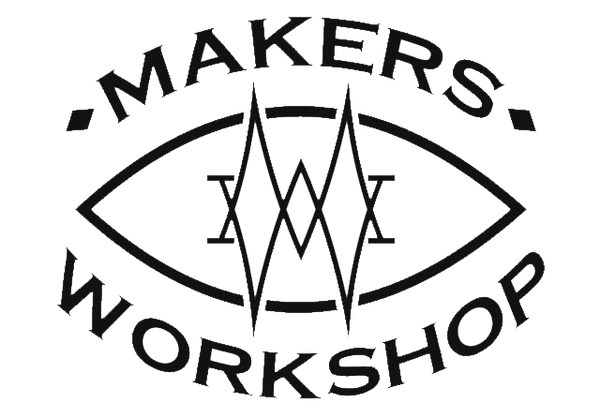Step 1
The first step was to flip the slab over and prepare the back side so that I could fill all the cracks and voids with resin. After taping it off with Tyvek tape, I got ready to pour some 2:1 TotalBoat epoxy into all of the cracks and crevices on the face of the board. After I finished pouring, I hit it with a torch to get rid of any bubbles, and then I let it sit for a couple of hours. Its important to do this prior to the final pour over to eliminate the risk of bubbles forming.
Step 2
Next, I set to making the 3D models for the leg joints using my iPad Pro with the Shaper 3D modeling program. I prepared them to print using Cura and our Artemis 300 3D printer. I printed these joints out of Hatchbox PLA at 100% infill.
Step 3
After it had been sitting for about 24 hours, I flipped the slab over and started by scraping off the top and using our hand power planer. Then I switched to my angle grinder to eliminate any lines that were left from the planer. I also used the angle grinder to soften the edges. Once it was fairly flat, I switched to the orbital palm sander to finish it off. I then flipped it over and did the same on the sides and the back.
Step 4
Then it was time to mix up some TotalBoat epoxy so that we could fill the cracks in the back just like we did the cracks on the front. This is 2:1 High Performance with a Medium Hardener.
Step 5
After filling the cracks, I revisited my 3D printer. One of the pieces worked after we cleaned it up with some sandpaper, but we had to reprint the other parts. I quickly did up a set of caps for the ends of the legs to protect the floors from the exposed pipe as well. Once the second print had finished, the pieces were looking a lot better.
Step 6
After the resin set up, I removed the bulk of the excess with a paint scraper. After getting it down to the surface, I switched to my card scraper and then to my random orbital sander. There was one section of the slab that was a little bit too thin, so I trimmed it with my jigsaw. I then finished shaping it with my random orbital sander.
Step 7
Then it was time to plane where the legs were going to go. I used my drywall square to ensure that the components would be on perpendicular lines so that the crossbars would line up properly later on.
I carefully marked the position of each bracket, and then I tried using a large Forstner bit to inset an area. This was a little bit more difficult than I expected it to be, so I had to try a couple of different things to make it so that I had a flat enough surface to get the job done. I then used a smaller Forstner bit to hollow out some of the area so that I could then use the larger Forstner bit to finish it off.
After making the holes, I used a sanding pad on my multi-tool so that I could get into the tight inset of the recessed area.
Step 8
Next, I lightly cleaned any remaining dust off of the table using a rag that was slightly dampened with paint thinner. I gave that about 10 to 15 minutes to dry before we poured the final top coat of resin on the tabletop. To level the tabletop, we used shims, and then we poured a thin coating of resin on top.
Step 9
Next, we mixed up 12 ounces of epoxy using TotalBoat 2:1 and a foam brush. I brought it pretty much right to the edge, trying not to let it drip over the side.
Step 10
Overall, the top came out great. I liked the high-gloss finish, so I didn’t want to disturb that. I just flipped it over so that I could sand down the different drips that were along the side.
Step 11
Then it was time to start building the leg assembly using three pieces of 1¼ aluminum tubing. I took the 3D printed brackets and fastened them to the bottom of each leg with some five-minute epoxy.
At this point, we were ready to mark the heights for our legs, and these holes were not the same depth because of how the piece of wood was. We made a jig to mark the leg heights, and then we got a uniform cut for each leg using a standard pipe cutter.
Step 12
I designed the fittings to be pretty tight, so I just used a rubber mallet to tap them down, and then I did a final alignment using the bottom side of the legs. I then set to positioning the rest of the assembly and putting the crossbars in place.
Step 13
After I got all that together, I flipped the top back over and put a nice, heavy coating of high-gloss varnish on the backside. Then I did a light sand of the 3D printed parts and the aluminum, cleaned it up with paint thinner, and painted the frame matte black.
Step 14
Then it was time to put the legs on. Since the table was so narrow, it was a little bit wobbly with the feet that we designed. I ended up designing a different foot for the front to help stabilize it.
The Final Result
Overall, this table came out great! The resin surface gave us a nice, level finish with high strength and high durability, without needing to use a planer.
